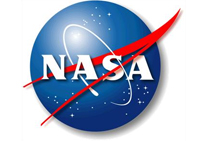GAO Report: NASA: Assessment of Selected Large-Scale Projects

GAO assessed 21 NASA projects with a combined life-cycle cost that exceeds $68 billion. Of those 21 projects, 16 had entered the implementation phase where cost and schedule baselines were established. Development costs for the 16 projects had an average growth of $94 million–or 14.6 percent–and schedules grew by an average of 8 months. The total increase in development costs for these projects was $1.5 billion. GAO found that 5 of the 16 projects were responsible for the overwhelming majority of this increase. The issue of cost growth is more significant than the 14.6 percent average would indicate because it does not capture the cost growth that occurred before several projects reported baselines in response to a statutory requirement in 2005.
Specifically, the 13 projects that GAO has reviewed over the past 3 years that established baselines prior to 2009 experienced an average development cost growth of almost 55 percent, with a total increase in development costs of almost $2.5 billion from their original confirmation baselines. This does not reflect considerable cost and schedule growth that will likely be experienced by NASA’s largest science program–the James Webb Space Telescope (JWST). Based on the findings of the independent panel that recently reviewed the JWST project and information that we obtained from project officials, it is likely that JWST will report significant cost and schedule growth, estimated to be $1.4 billion or more and up to 15 months, respectively.
Many of the projects GAO reviewed for this report experienced challenges in the areas of technology, design, funding, launch vehicles, development partner performance, parts, and contractor management. Reducing the kinds of challenges this assessment identifies in acquisition programs hinges on developing a sound business case for a project. The development and execution of a knowledge-based business case for these projects can provide early recognition of challenges, allow managers to take corrective action, and place needed and justifiable projects in a better position to succeed. The inherent complexity of space development programs should not preclude NASA from achieving what it promises when requesting and receiving funds.
In response to GAO’s designation of NASA’s acquisition management as a high risk area, NASA has developed a corrective action plan to improve the effectiveness of acquisition project management. The plan identifies five areas for improvement, each of which contains targets and goals to measure improvement. As part of this initiative, the agency is continuing its implementation of a new cost estimation tool, the Joint Cost and Schedule Confidence Level, to help project officials with management, cost and schedule estimating, and maintenance of adequate levels of reserves.








